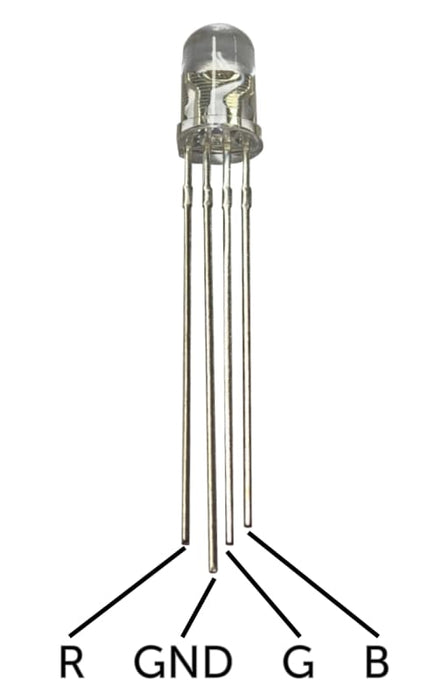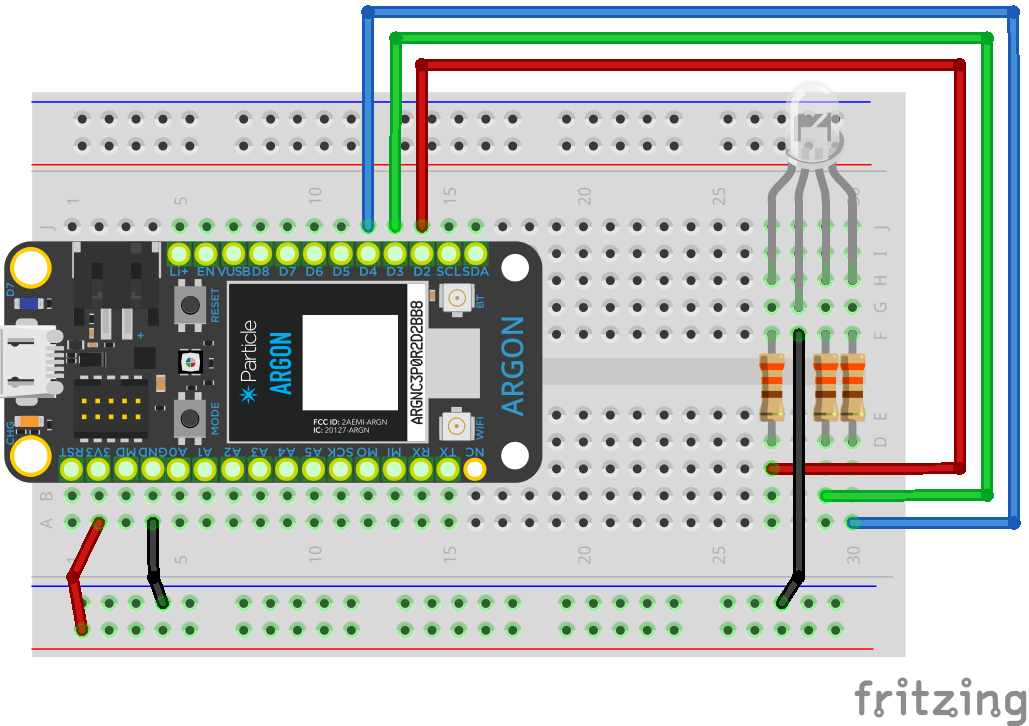

- #Using common cathode led with common adone output how to
- #Using common cathode led with common adone output full
- #Using common cathode led with common adone output code
One common pin and one for each of the three LEDs. This allows a program to vary both the color and brightness level of the LED.
#Using common cathode led with common adone output full
A PWM value of 0.0 would be off and a 1.0 full on for each color LED. In the mbed APIs, three PWMOuts would be used to control the RGB LED. Three PWM output bits would normally be used so that the brightness of each of the three LEDs can be controlled independently. LEDs need to be turned on and off very fast for dimming (changing the voltage across it does not work like it does in incandescent bulbs).The on and off times are so fast that human vision does not see a flicker on the LED and only the average value is perceived. It turns out, it is easier to produce colors if HSV is given rather than percentages in RGB.An RGB LED is actually three LEDs, red, green, and blue inside one package.


Bret had to change the RGB values to HSV which is short for hue, saturation, and value. Yeah producing the color wheel looks very easy here but it’s actually quite complicated. Use a 25ms delay between each color in the wheel
#Using common cathode led with common adone output code
How long to show each color in the example code (in milliseconds) In this example, we have a COMMON_ANODE LED, use COMMON_CATHODE otherwise Red, Green and Blue LED legs are connected to PWM pins 11,9 & 6 respectively Declare an RGBLED instanced named rgbLed Instead of writing three analogWrites(), the library allows you to write colors in one line of code: rgbLed.writeRGB(0,255,0) īut what I liked most about the library is the color wheel function. So turquoise is produced when I write this out: analogWrite(r, 15)īret Stetham created a great library that makes Arduino RGB programming easier. This is converted to analogWrite() by just dividing those numbers by 100 and multiplying by 255. I found this website that gives the RGB values for different colors.For example, the color turquoise is rgb(6%, 87%, 69%) according to that website. Now what if you want another color aside from red, green or blue? Remember that you have 16 million colors to choose from! So toggling between the three colors is just placing these commands inside the loop() with delay in between. The color green is produced when I do this: analogWrite(r,0) Īnd finally, the color blue is produced through this: analogWrite(r,0) Here, the color red is produced when I run these commands: analogWrite(r,255) Note that this sketch is for a common cathode RGB LED and follows the fritzing diagram for such LED above.

Here is a sketch that toggles between red, green and blue colors: int r = 6 The intensity of the LED can only be varied using analogWrite() and this function is only usable for PWM pins. That would result in an uneven current distribution on the LED when you want to produce a color besides red, green and blue.Īlso, noticed that the R, G, and B pins are connected to PWM pins? That’s because to produce different colors, we need to combine red, green and blue lights at different intensities. You might think that only one resistor is needed and should be connected to the common pin. The resistor in the diagrams are there to limit the current to the LED. For a common anode LED, the common pin is connected to 5V. See the difference? For a common cathode LED, the common pin is connected to GND. On the other hand, this is how you would connect a common anode RGB LED:
#Using common cathode led with common adone output how to
Here is a Fritzing diagram on how to connect a common cathode RGB LED: Obviously, connecting a common cathode RGB LED to Arduino is different from connecting a common anode RGB LED. For a common anode RGB LED, the diagram is reversed:Ī common anode RGB LED looks the same as a common cathode type but the longest pin is now the common anode pin. The diagrams above are for a type of RGB LED where the cathode is common. Just like the normal LED, the longest pin is the common cathode pin. The blue LED is the next shortest and then followed by the green LED. Which pin is red, green or blue? The length of the pins tells us this: Such LED is the same as a red, green and blue LED connected like this, hence the four pins: RGB LEDs typically have four pins as shown: This tutorial will show you how to use a RGB LED with Arduino. A RGB LED is a special light emitting diode which can produce 16 million possible colors, all by combining the colors red, green and blue in varying intensities.


 0 kommentar(er)
0 kommentar(er)
